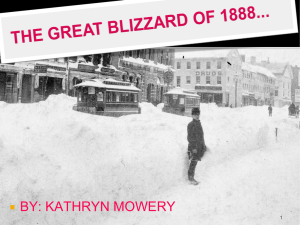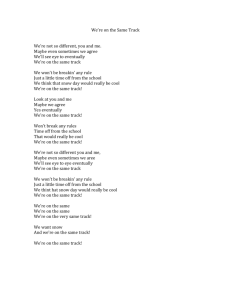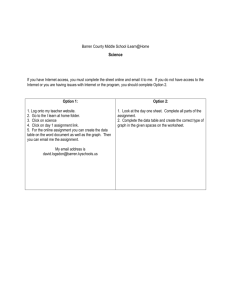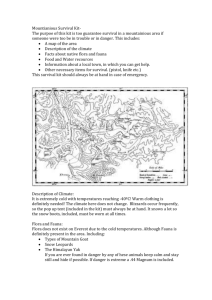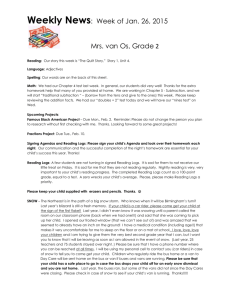Earth is Getting Hotter
advertisement
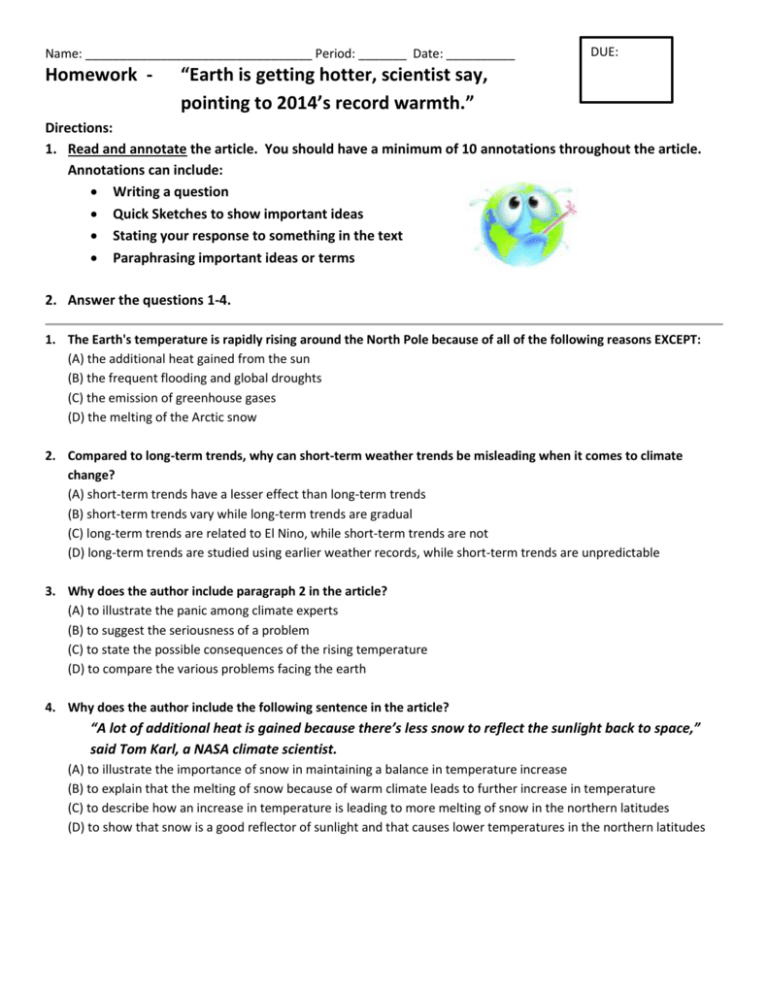
Name: _________________________________ Period: _______ Date: __________ Homework - DUE: “Earth is getting hotter, scientist say, pointing to 2014’s record warmth.” Directions: 1. Read and annotate the article. You should have a minimum of 10 annotations throughout the article. Annotations can include: Writing a question Quick Sketches to show important ideas Stating your response to something in the text Paraphrasing important ideas or terms 2. Answer the questions 1-4. 1. The Earth's temperature is rapidly rising around the North Pole because of all of the following reasons EXCEPT: (A) the additional heat gained from the sun (B) the frequent flooding and global droughts (C) the emission of greenhouse gases (D) the melting of the Arctic snow 2. Compared to long-term trends, why can short-term weather trends be misleading when it comes to climate change? (A) short-term trends have a lesser effect than long-term trends (B) short-term trends vary while long-term trends are gradual (C) long-term trends are related to El Nino, while short-term trends are not (D) long-term trends are studied using earlier weather records, while short-term trends are unpredictable 3. Why does the author include paragraph 2 in the article? (A) to illustrate the panic among climate experts (B) to suggest the seriousness of a problem (C) to state the possible consequences of the rising temperature (D) to compare the various problems facing the earth 4. Why does the author include the following sentence in the article? “A lot of additional heat is gained because there’s less snow to reflect the sunlight back to space,” said Tom Karl, a NASA climate scientist. (A) to illustrate the importance of snow in maintaining a balance in temperature increase (B) to explain that the melting of snow because of warm climate leads to further increase in temperature (C) to describe how an increase in temperature is leading to more melting of snow in the northern latitudes (D) to show that snow is a good reflector of sunlight and that causes lower temperatures in the northern latitudes



